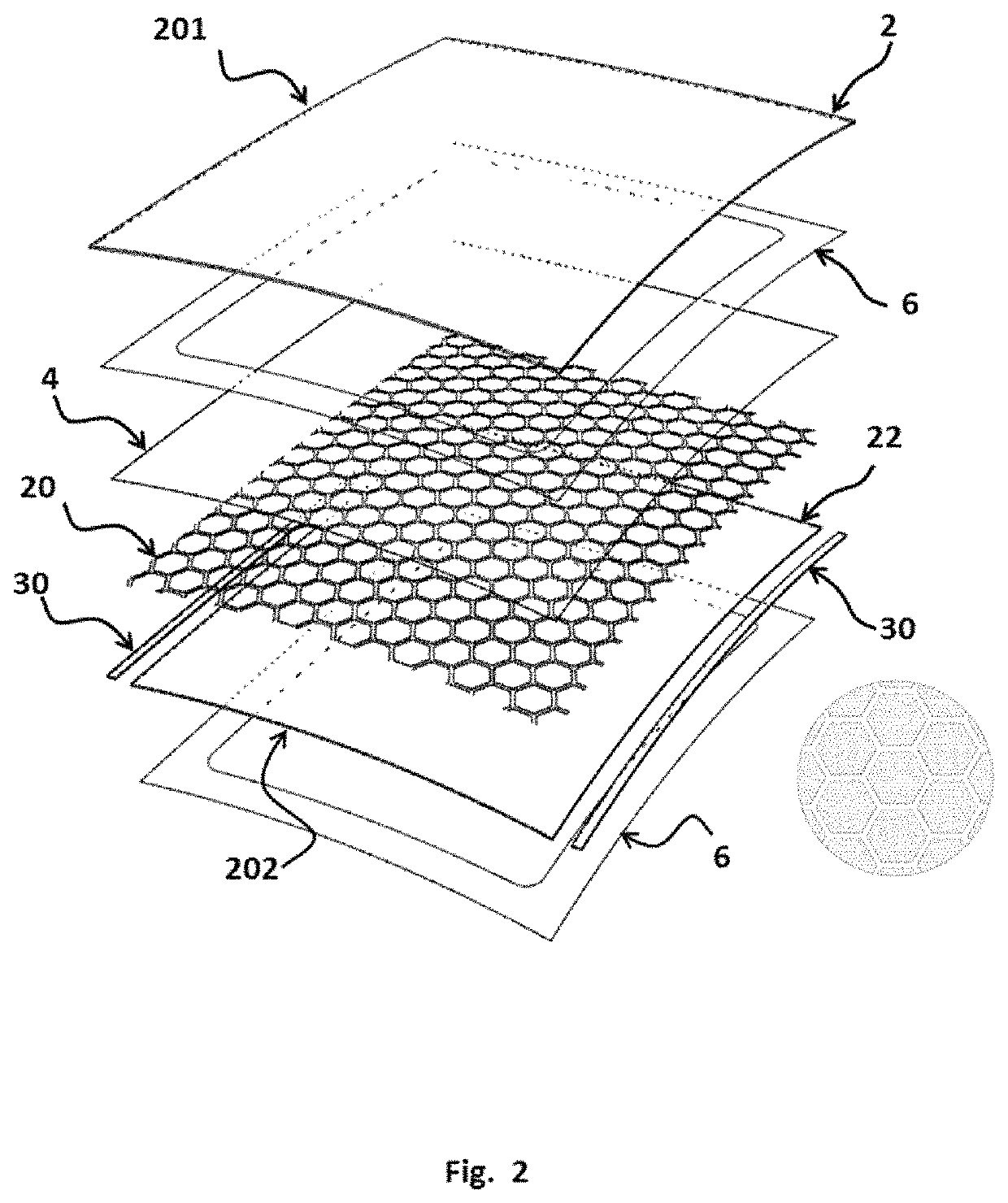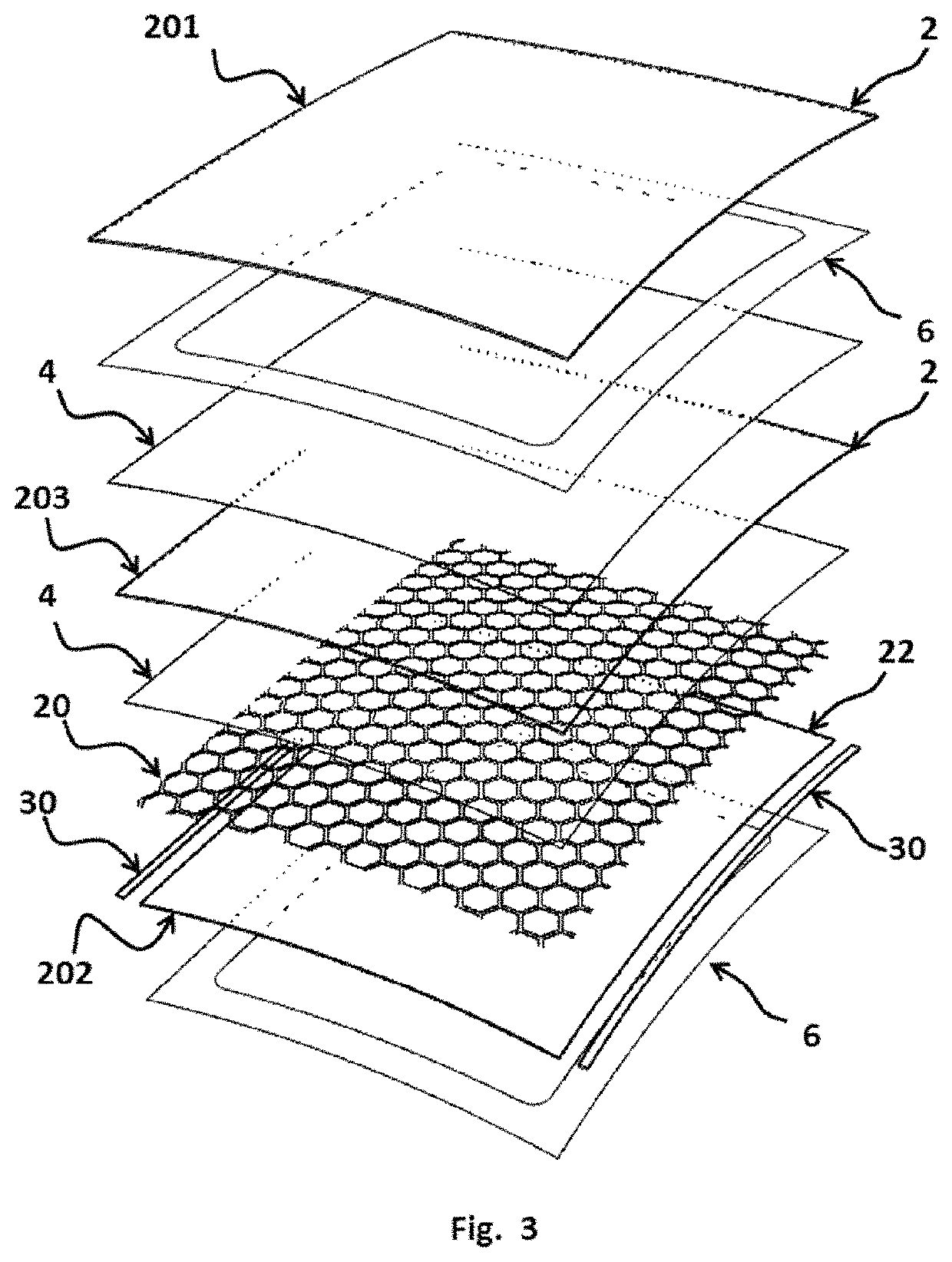Illuminated laminate with superior aesthetics and brightness
a technology of automotive glazing and laminates, applied in semiconductor devices, lighting and heating apparatus, instruments, etc., can solve the problems of large glass roofs, unfavorable aesthetics and brightness, and inability or inability to mount a light near the center of the roo
- Summary
- Abstract
- Description
- Claims
- Application Information
AI Technical Summary
Benefits of technology
Problems solved by technology
Method used
Image
Examples
example 1
[0074]Outer: 2.3 mm annealed solar green
[0075]Interlayer: 0.76 mm clear PVB
[0076]Inner: 2.3 mm annealed clear
example 2
[0077]Outer: 2.3 mm, press bent coated, clear, annealed, soda-lime glass with ground edge
[0078]Interlayer: 0.76 mm 20% blue PVB
[0079]Inner: 0.7 mm, flat, clear, chemically tempered, aluminosilicate glass with LASER cut edge
[0080]Laminates, in general, are articles comprised of multiple sheets of thin, relative to their length and width, material, with each thin sheet having two oppositely disposed major faces and typically of relatively uniform thickness, which are permanently bonded to one and other across at least one major face of each sheet.
[0081]Laminated safety glass is made by bonding two sheets (201&202) of annealed glass 2 together using a plastic bonding layer comprised of a thin sheet of transparent thermoplastic 4 (interlayer) as shown in FIGS. 1A and 1B.
[0082]Annealed glass is glass that has been slowly cooled from the bending temperature down through the glass transition range. This process relieves any stress left in the glass from the bending process. Annealed glass ...
PUM
| Property | Measurement | Unit |
|---|---|---|
| particle size | aaaaa | aaaaa |
| size | aaaaa | aaaaa |
| size | aaaaa | aaaaa |
Abstract
Description
Claims
Application Information
 Login to View More
Login to View More - R&D
- Intellectual Property
- Life Sciences
- Materials
- Tech Scout
- Unparalleled Data Quality
- Higher Quality Content
- 60% Fewer Hallucinations
Browse by: Latest US Patents, China's latest patents, Technical Efficacy Thesaurus, Application Domain, Technology Topic, Popular Technical Reports.
© 2025 PatSnap. All rights reserved.Legal|Privacy policy|Modern Slavery Act Transparency Statement|Sitemap|About US| Contact US: help@patsnap.com



